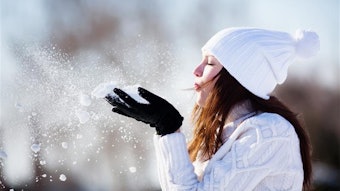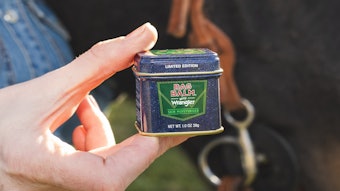
What's the difference between sun care and a daily proactive skin care regime? Tony O'Lenick asked Thomas Meyer, Ph.D., an industry expert in sun and skin care, for this installment of the 'Comparatively Speaking' series.
Meyer responded as follows: The difference, in one sentence, is that sun care is only part of skin care. To be complete, skin care requires a daily proactive total skin care regimen.
The latest research connects reduced skin hydration in aged human skin with higher levels of systemic circulating pro-inflammatory cytokines that, in turn, are linked with the downstream development of chronic systemic disorders, including atherosclerosis, type II diabetes, osteoporosis and Alzheimer’s disease.
One clinical study reported that the daily application of a topical emollient to increase skin hydration in aged humans lowered their circulating levels of inflammatory cytokines to those comparable in young adults. This suggests that the daily application of an effective topical moisturizer could help to mitigate the development of age-associated systemic disorders and otherwise improve overall health as humans advance in age.1
In addition to the natural decline in skin hydration and barrier function that occurs with age, normal skin throughout life is continually assaulted by its direct interface with a highly oxidizing environment. Research documents that sun exposure and air pollution especially, but also tobacco smoke and cosmetic products, initiate damage that drives premature skin aging such as fine lines, wrinkles, loss in elasticity, dryness, pruritus and age spots.2 ,3
Reactive Oxygen Species
One of the main ways by which environmental stressors mediate their effects in skin is by inducing the excess formation4-6 of reactive oxygen species (ROS). Left unchecked, excess ROS can oxidize cellular targets, e.g., lipids, proteins, DNA and mitochondria, and affect cellular signaling or gene expression pathways, all of which creates oxidative stress, perturbs barrier function and degrades collagen—which is one of skin’s major structural proteins and a hallmark of premature skin aging.
More than 50% of ROS formation stems from radiation outside the UV spectral region and therefore cannot be prevented by sunscreens.
Formulation strategies that help skin cope with excess ROS generation on a daily basis could be an effective way to limit the damage that leads to premature aging and help to protect skin’s barrier function. This is also important because skin’s own antioxidant defenses are inherently weak and easily overwhelmed by the sheer abundance of ROS generated upon exposure to environmental stressors.7, 8
Antioxidants
A plethora of formulation ingredients claims to manage excess ROS levels in skin. By far, the most common type of ingredients, including natural extracts, are those with antioxidant functionality, which neutralize ROS once formed but before they can attack and damage cellular targets.
While in common use, it must be stressed that antioxidants: 1) are not all equal in their ability to neutralize the various reactive forms of ROS; 2) must be used at efficacious levels; 3) must partition into compartments within skin where ROS are generated; and 4) need to be certified in biological systems (e.g., 3D skin models or cell cultures) under exposure to UV or HEV (high energy visible) radiation. This latter point is important because many antioxidants, especially natural extracts, can increase rather than decrease ROS by sensitizing their formation when exposed to sun’s radiation.9
Physical Quenchers
The use of physical quenchers can help manage ROS formation in sun-exposed skin, which is relevant since more than 50% of ROS formation stems from radiation outside the UV spectral region and therefore cannot be prevented by sunscreens.5, 6 Physical quenchers interact with electronic excited state species to relax them back to their ground states before they can even give rise to ROS.
Antioxidants need to be certified in biological systems because many antioxidants, especially natural extracts, can increase rather than decrease ROS by sensitizing their formation when exposed to sun’s radiation.
Physical quenchers can neutralize singlet oxygen (an excited state species of oxygen) or interact with skin’s own excited state molecules after they absorb sun’s radiation to suppress ROS formation.10 A good example of skin’s endogenous molecules that sensitize ROS formation are advanced glycation endproducts (AGEs). AGEs accumulate in abundance on collagen in the dermis with aging, and have been identified as one the most potent sources of sun-induced ROS formation within skin.11
Optimizing Hydration
There are many proven formulation approaches or combinations of approaches to optimize hydration levels within skin using humectants to bind water, occlusive polymers to retard water loss, lipids to repair defects in lipid bilayers, aquaporin-3 stimulators to help distribute water more evenly throughout skin, and ingredients that promote the efficient organization and packing of stratum corneum lipids.
Taken together, these results emphasize that the benefits of good daily skin care can affect not only skin’s own appearance and health, but possibly overall systemic health as humans progress into older age. In this regard, the daily application of topical products (emollients, sunscreens, therapeutics) to maintain hydration and help skin cope with excess ROS formation from daily exposure to environmental stressors could represent an easy and inexpensive way to improve human health over the entire course of life.










